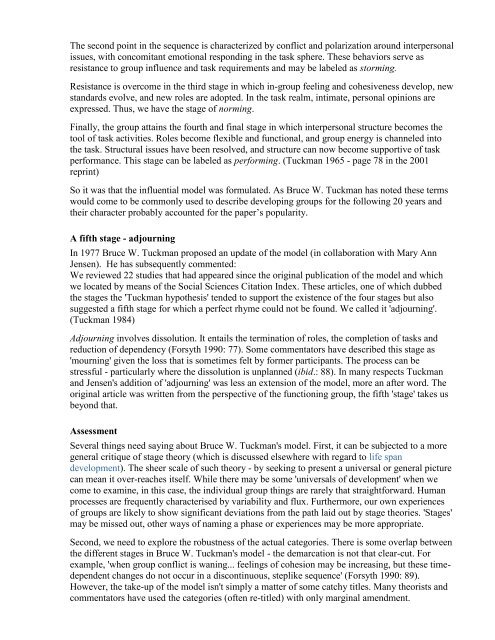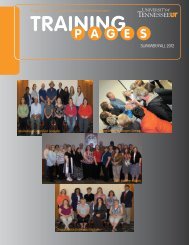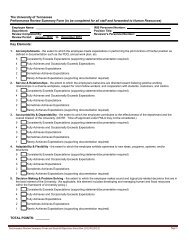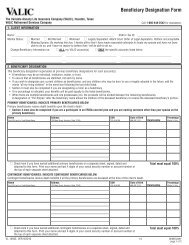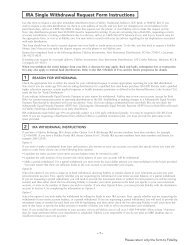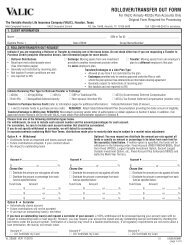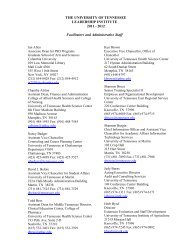bruce w. tuckman - forming, storming norming and performing in ...
bruce w. tuckman - forming, storming norming and performing in ...
bruce w. tuckman - forming, storming norming and performing in ...
You also want an ePaper? Increase the reach of your titles
YUMPU automatically turns print PDFs into web optimized ePapers that Google loves.
The second po<strong>in</strong>t <strong>in</strong> the sequence is characterized by conflict <strong>and</strong> polarization around <strong>in</strong>terpersonal<br />
issues, with concomitant emotional respond<strong>in</strong>g <strong>in</strong> the task sphere. These behaviors serve as<br />
resistance to group <strong>in</strong>fluence <strong>and</strong> task requirements <strong>and</strong> may be labeled as <strong>storm<strong>in</strong>g</strong>.<br />
Resistance is overcome <strong>in</strong> the third stage <strong>in</strong> which <strong>in</strong>-group feel<strong>in</strong>g <strong>and</strong> cohesiveness develop, new<br />
st<strong>and</strong>ards evolve, <strong>and</strong> new roles are adopted. In the task realm, <strong>in</strong>timate, personal op<strong>in</strong>ions are<br />
expressed. Thus, we have the stage of <strong>norm<strong>in</strong>g</strong>.<br />
F<strong>in</strong>ally, the group atta<strong>in</strong>s the fourth <strong>and</strong> f<strong>in</strong>al stage <strong>in</strong> which <strong>in</strong>terpersonal structure becomes the<br />
tool of task activities. Roles become flexible <strong>and</strong> functional, <strong>and</strong> group energy is channeled <strong>in</strong>to<br />
the task. Structural issues have been resolved, <strong>and</strong> structure can now become supportive of task<br />
performance. This stage can be labeled as per<strong>form<strong>in</strong>g</strong>. (Tuckman 1965 - page 78 <strong>in</strong> the 2001<br />
repr<strong>in</strong>t)<br />
So it was that the <strong>in</strong>fluential model was formulated. As Bruce W. Tuckman has noted these terms<br />
would come to be commonly used to describe develop<strong>in</strong>g groups for the follow<strong>in</strong>g 20 years <strong>and</strong><br />
their character probably accounted for the paper’s popularity.<br />
A fifth stage - adjourn<strong>in</strong>g<br />
In 1977 Bruce W. Tuckman proposed an update of the model (<strong>in</strong> collaboration with Mary Ann<br />
Jensen). He has subsequently commented:<br />
We reviewed 22 studies that had appeared s<strong>in</strong>ce the orig<strong>in</strong>al publication of the model <strong>and</strong> which<br />
we located by means of the Social Sciences Citation Index. These articles, one of which dubbed<br />
the stages the 'Tuckman hypothesis' tended to support the existence of the four stages but also<br />
suggested a fifth stage for which a perfect rhyme could not be found. We called it 'adjourn<strong>in</strong>g'.<br />
(Tuckman 1984)<br />
Adjourn<strong>in</strong>g <strong>in</strong>volves dissolution. It entails the term<strong>in</strong>ation of roles, the completion of tasks <strong>and</strong><br />
reduction of dependency (Forsyth 1990: 77). Some commentators have described this stage as<br />
'mourn<strong>in</strong>g' given the loss that is sometimes felt by former participants. The process can be<br />
stressful - particularly where the dissolution is unplanned (ibid.: 88). In many respects Tuckman<br />
<strong>and</strong> Jensen's addition of 'adjourn<strong>in</strong>g' was less an extension of the model, more an after word. The<br />
orig<strong>in</strong>al article was written from the perspective of the function<strong>in</strong>g group, the fifth 'stage' takes us<br />
beyond that.<br />
Assessment<br />
Several th<strong>in</strong>gs need say<strong>in</strong>g about Bruce W. Tuckman's model. First, it can be subjected to a more<br />
general critique of stage theory (which is discussed elsewhere with regard to life span<br />
development). The sheer scale of such theory - by seek<strong>in</strong>g to present a universal or general picture<br />
can mean it over-reaches itself. While there may be some 'universals of development' when we<br />
come to exam<strong>in</strong>e, <strong>in</strong> this case, the <strong>in</strong>dividual group th<strong>in</strong>gs are rarely that straightforward. Human<br />
processes are frequently characterised by variability <strong>and</strong> flux. Furthermore, our own experiences<br />
of groups are likely to show significant deviations from the path laid out by stage theories. 'Stages'<br />
may be missed out, other ways of nam<strong>in</strong>g a phase or experiences may be more appropriate.<br />
Second, we need to explore the robustness of the actual categories. There is some overlap between<br />
the different stages <strong>in</strong> Bruce W. Tuckman's model - the demarcation is not that clear-cut. For<br />
example, 'when group conflict is wan<strong>in</strong>g... feel<strong>in</strong>gs of cohesion may be <strong>in</strong>creas<strong>in</strong>g, but these timedependent<br />
changes do not occur <strong>in</strong> a discont<strong>in</strong>uous, steplike sequence' (Forsyth 1990: 89).<br />
However, the take-up of the model isn't simply a matter of some catchy titles. Many theorists <strong>and</strong><br />
commentators have used the categories (often re-titled) with only marg<strong>in</strong>al amendment.


